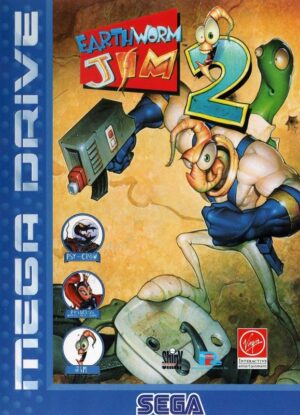Retro Replay Review
Gameplay
Grand Slam Baseball breaks new ground by blending accessible arcade-style controls with deep simulation mechanics. The introduction of a pitching meter—allowing players to dial in both velocity and accuracy—adds a strategic layer to each at-bat. This system, which feels intuitive yet challenging to master, predates and influences later baseball franchises that adopted similar gauges for pitching and batting. On the hitting side, the metered swing mechanic lets you build power before timing your release, making each swing feel deliberate and satisfying.
(HEY YOU!! We hope you enjoy! We try not to run ads. So basically, this is a very expensive hobby running this site. Please consider joining us for updates, forums, and more. Network w/ us to make some cash or friends while retro gaming, and you can win some free retro games for posting. Okay, carry on 👍)
Beyond the core offense and defense, Grand Slam offers a surprisingly robust roster of managerial tools. The trade AI engine evaluates team needs and counters your proposals, giving you the feel of a real-world general manager. Meanwhile, catcher AI and pitch-calling signals let you learn how to exploit each hitter’s weaknesses. Watching your catcher discreetly shift positions or call for an outside fastball demonstrates a level of polish not often seen in sports titles of the era.
Season mode further deepens the experience with an All-Star Break complete with a working voting ballot, forcing you to consider which players truly deserve the spotlight. Roster management, fatigue tracking, and injury concerns keep every decision meaningful, and the in-game JumboTron animations and lighthearted commentary reward your big plays with personality. Whether you’re executing a perfectly placed bunt or firing a laser from the outfield, Grand Slam keeps you invested inning after inning.
Graphics
For a 1997 release, Grand Slam’s visuals hold up remarkably well—especially on PCs equipped with 3D accelerator cards. The game supports hardware-accelerated rendering, which offers smoother frame rates and crisper textures compared to the software-only fallback. Players who don’t have a dedicated 3D card can still enjoy fully three-dimensional gameplay, albeit with slightly chunkier polygons and longer load times between camera angles.
On the PlayStation and Sega Saturn ports, the default 3D models deliver solid ballpark atmospheres, though you’ll notice occasional texture warping common to those consoles. Character animations—like the stretch of a diving shortstop or the wind-up of a curveball—feel fluid and dynamic, bringing an extra layer of spectacle to every play. Small touches, such as chewing bubble gum bubbles during an at-bat, inject personality into pixelated players and remind you that this is a game made by baseball fans.
Stadiums are rendered with care, featuring realistic diamond layouts and crowd placards that react to big moments. The JumboTron in right field showcases simple yet charming home-run animations, and scoreboard graphics keep you informed without clutter. While textures may appear dated by modern standards, the clear player models and responsive camera work create an immersive baseball environment that still entertains today.
Story
As a sports simulation, Grand Slam doesn’t follow a scripted narrative with cutscenes or voiced characters. Instead, its “story” unfolds through your decisions and on-field triumphs. Each season you play becomes a unique saga of roster moves, clutch hits, and close pennant races. The trade AI can surprise you with a blockbuster offer, sending shockwaves through your front office and creating a mini-drama every time you negotiate deals.
The All-Star Break introduces another narrative beat, where your chosen starters and reserves earn their way through balloting. Watching your star slugger receive the nod—or agonize over a snub—builds emotional investment and gives context to each midseason milestone. The commentary may be lighthearted, but it reinforces plot points like big home runs or pitching duels, effectively turning box scores into story highlights.
Grand Slam’s strength lies in emergent storytelling: whether you’re engineering a Cinderella run by a cellar-dweller team or guiding an MVP candidate through a historic campaign, the game adapts to your play style. There’s no canned drama—every postseason push and managerial decision unfolds organically, letting you craft your own baseball legend.
Overall Experience
Grand Slam Baseball may have flown under the radar in 1997, but its innovative mechanics and attention to baseball authenticity make it a standout sports title of its era. The blend of arcade-style immediacy and simulation depth offers replayability that few contemporary games could match. From the satisfying click of the pitching meter to the nail-biting trade negotiations, every feature coalesces into a cohesive package.
While the graphics and audio may feel dated compared to modern releases, the core gameplay remains engaging. Whether you’re revisiting Grand Slam for nostalgia or discovering it for the first time, you’ll appreciate how many genre-defining ideas it introduced—many of which became staples in later AAA baseball franchises. The platform choice (PC, PlayStation, or Saturn) will dictate visual fidelity, but the fundamental experience stays true across all versions.
For fans of baseball sims and retro sports titles, Grand Slam Baseball is a hidden gem worth exploring. Its pioneering use of pitchers’ meters, advanced AI systems, and immersive season play create a rich sandbox for baseball aficionados. If you value deep mechanics, emergent storytelling, and a genuine love of the game, Grand Slam delivers a rewarding experience that still resonates more than two decades after its release.
 Retro Replay Retro Replay gaming reviews, news, emulation, geek stuff and more!
Retro Replay Retro Replay gaming reviews, news, emulation, geek stuff and more!




Reviews
There are no reviews yet.